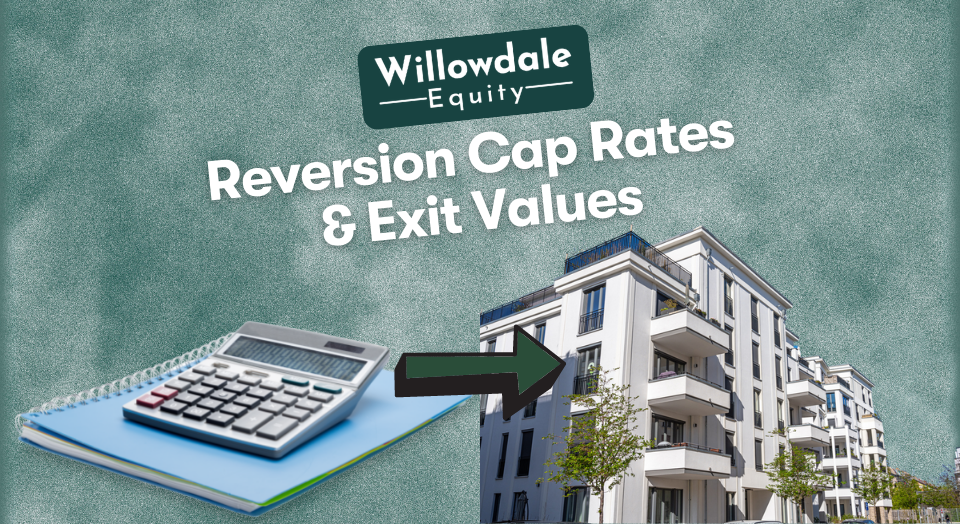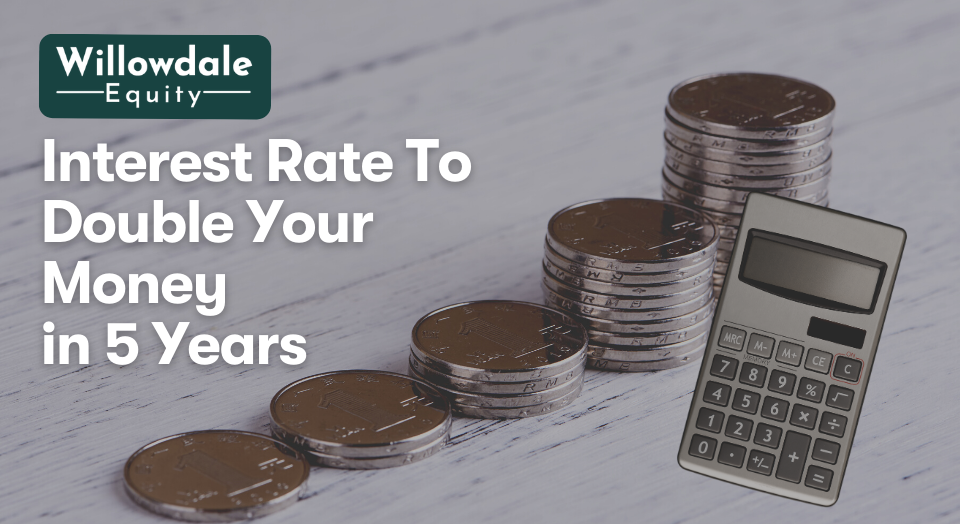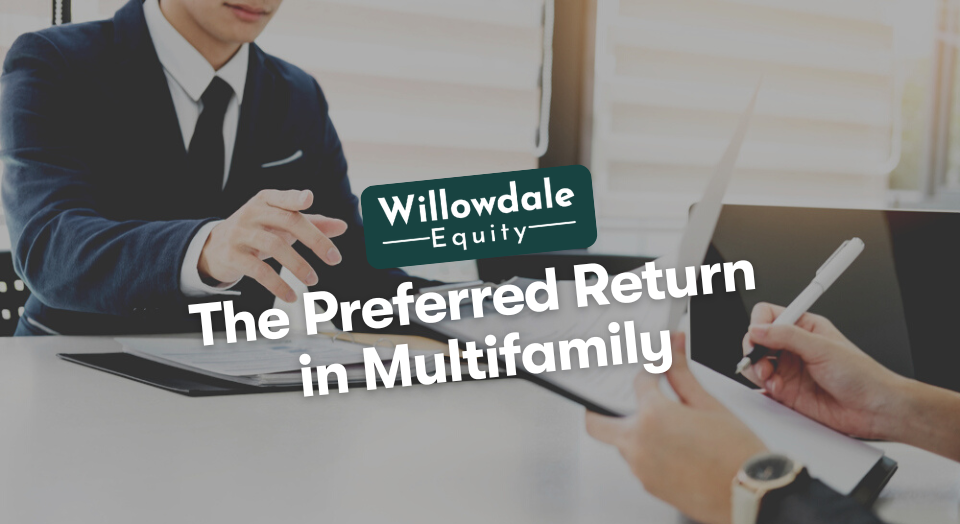
Reversion Cap Rate: A Tool For Underwriting Exit Sales Value
This article is part of our guide on what a good cap rate is for multifamily, available here.
Many commercial real estate investors know that the reversion capitalization rate is a critical metric in the underwriting process. Helping a real estate investor have a more conservative approach to projecting the exit market value of a commercial real estate project is very crucial to the success of the project, as investors know they can’t fully predict the future. Therefore as a real estate sponsor putting the deal together, it’s in their best interest to stress test with a margin of error.
In this article, we will discuss the reversion cap rate and how the terminal cap rate can be used to help determine the exit sales value for your property.
Key Takeaways
-
The reversion cap rate comes into play when we’re underwriting the deal’s exit value.
-
The reversionary cap rate is a conservative way to stress test the exit value, which is performed by increasing the cap rate by a certain percentage.
-
The exit cap rate and terminal cap rate are interchangeable words used to describe the cap rate on the sale of the property.
-
Using a reversion cap rate in your underwriting models allows your deal to have some margin of error. The increase in cap rate that effectively takes place with a reversion cap rate seems so small as a numeric value, yet it does swing value quite a bit, especially the more significant the deal size is.
What is a reversion cap rate and why is it important in underwriting exit sales value

Before we can understand precisely what the reversion cap rate is, it’s essential to understand the going-in market cap rate. The going-in market cap rate is the cap rate that similar commercial properties sell for in the same market. Once we have this number, we can begin effectively building out our proforma projections for where we believe we could take the terminal value of the property if we were to add some sort of value to it.
The reversion cap rate comes into play when we’re underwriting the deal’s exit value. The reversionary cap rate is a conservative way to stress test the exit value, which is performed by increasing the cap rate by a certain percentage. Generally, at Willowdale Equity, we’ll expand our reversion cap at least 0.5% (or 50 basis points) higher than the going-in market cap rate. So, for example, if the going-in market cap rate is 6%, we would use a reversion cap rate of 6.5% to underwrite the deal’s exit sales value.
The reversion cap rate is super crucial to underwriting the exit sales value. Although we are fundamental investors, we get paid for our ability to run complex underwriting modeling to predict future value; the honest answer is that interest rates are constantly changing, and markets are cyclical.
With that being said, it’s essential to use this reversion cap rate that lowers the projected exit value, which in return gives us a better indication of whether the projected return hurdles can ideally be met throughout the hold of the project.
You see, most of the deal’s returns are based on the exit sales value, not the cash flow generated annually. Therefore it’s essential to get that exit value as close to accurate as possible to increase the accuracy of the return projections of the project.
Terminal cap rate vs going in cap rate
The exit cap rate and terminal cap rate are interchangeable words used to describe the cap rate on the sale of the property. This means that the going-in cap rate is the cap rate in place when the property is acquired, and the terminal cap rate represents the cap rate when we exit/sell the property.
How to calculate a property's reversion cap rate
The property’s reversion cap rate formula adds a specific percentage increase on top of the property’s original going-in market cap rate. This means you add whatever cap rate increases to your reversion cap rate to stress test your deal’s underwriting proforma exit projections effectively.
Reversion Value: Factors that influence a property's reversion cap rate
Many factors can influence a property’s reversion cap rate. Some of these factors include:
- The level of risk associated with the property
- The amount of debt on the property
- The amount of equity in the property
- The length of time until the projected exit
- The market conditions at the time of the projected exit
- The economic conditions at the time of the projected exit
- The type of property
- The geographic location of the property
- And much more!
Examples of how the reversion cap rate can be used in practice

Let’s say the going-in market cap rate is 6%, and the reversion cap rate we use is 6.5%. And let’s say that the expected net operating income (NOI) for the property is $600,000, the formula for finding value is NOI/Market Cap rate. Here’s how that would look in terms of exit value.
We would perfom the following calulcation using the reverison cap rate to find the exit value ➡ $600,000 / 0.065 = $9,230,769
If we we’re to calculate value based on the going-in market cap rate, it would look like this ➡ $600,000 / 0.06 = $10,000,000.
This 0.05% difference in cap rates represents a decrease in value of $769,231.
Furthermore, if the reversion cap rate was 7%, the value would like like this ➡ $600,000 / 0.07 = $8,571,428.
In this instance, this 1% difference in cap rates would represent a decrease in value of $1,428,572 based on a going-in cap rate of 6%.
The benefits of using the reversion cap rate in underwriting exit sales value
Using a reversion cap rate in your underwriting models allows your deal to have some margin of error. The increase in cap rate that effectively takes place with a reversion cap rate seems so small as a numeric value, yet it does swing value quite a bit, especially the more significant the deal size is. The name of the game is to undersell and over-deliver as opposed to over-selling and underdelivering. That means base all your numbers off modeling that works in conservative exit values to ensure project success closely.
Good Read: How CAP Rate Compression Affects Multifamily Values
Limitations of the reversion cap rate

Although there aren’t many limitations to using a reversion cap rate, it is essential to note that just because you add a 0.5%-1% increase in cap rate for your exit value, it doesn’t make your deal immune to large macro-economical events or even significant local events that may significantly affect your value when you decide to sell.
The reversion cap rate is a conservative approach to underwriting exit values but doesn’t prevent you from seeing greater risk. Everything has risk, including the real estate that you and I will purchase; that being said, real estate has continued to perform strongly over time and provides lower risk than many other investment vehicles.
Frequently Asked Questions About The Reversion Cap Rate
The exit cap rate is the projected assumption of what the cap rate of the select property will be when the property sells at the projected end of the deal hold period. It is an assumption that considers the going-in cap rate, interest rates, the supply and demand for your properties type of product, and many other factors.
The terminal cap rate is higher than the going-in cap rate for underwriting assumptions to effectively model the projections of the deal’s performance under a more conservative lens. This is to effectively stress test the return performance of the deal.
It should be higher to stress test the performance of the deal effectively. However, we want the exit cap rate to be lower, signifying that every dollar of net operating income (NOI) will be worth a higher multiple of value when you sell the property.
Reversion Cap Rate - Conclusion
A conservative approach to projecting the exit property value of a real estate project is essential for investors. Reversion cap rates are an underwriting metric that can help you make more informed decisions about investing in properties, as it helps show how much profit or loss your real estate investment will have if prices go up or down over time.
One of the ways to protect yourself from losses on property investment property is to use reversion cap rates when estimating the future value of your property while factoring in a margin of error based on possible economic changes in the future. Also, keep a close eye on the spread between today’s cap rates and the 10-year treasury and make an effort to predict future demand and value.
Sources:
- Investopedia, “Terminal Value (TV)“
- CFI, “Macroeconomic Factor“
Interested In Learning More About PASSIVE Real Estate Investing In Multifamily Properties?
Get Access to the FREE 5 Day PASSIVE Real Estate Investing Crash Course.
In this video crash course, you’ll learn everything you need to know from A to Z
about passive investing in multifamily real estate.
We’ll cover topics like earned income vs passive income, the tax advantages, why multifamily, inflation, how syndications work, and much much more!




